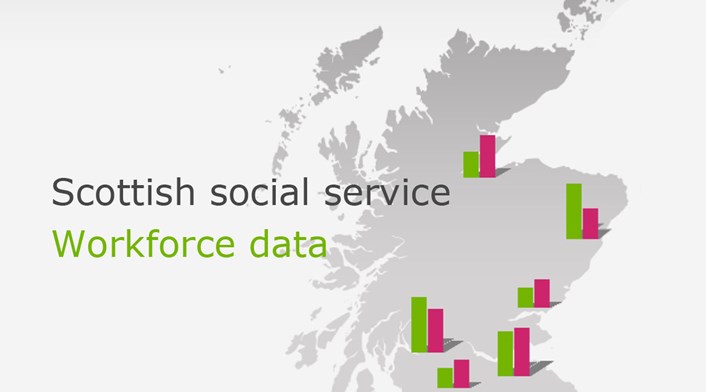The social service workforce makes up approximately 7.7% of all Scottish employment. The whole time equivalent (WTE) measure of the workforce is 153,320, an increase of 1.6% since 2017.
The biggest rises in 2018 were in care homes for adults and generic fieldwork teams. The increase in the number of people working in generic fieldwork teams was mainly driven by Glasgow City Council reabsorbing staff from their previous arms-length organisation Cordia.
This year the stability index of the workforce is 77.7%. This is a slight rise from 77.1% in 2017.This means just over three-quarters of the workforce remained in the same post since last year.
The largest employer type differs between local authority areas, with services in Orkney, Shetland and Na h-Eileanan Siar (the three island authorities) provided mainly by the public sector. However, in most areas the private sector is the largest employer. Overall 40% of the workforce is employed by private providers, 33% in the public sector and 28% in the voluntary sector.
Maree Allison, SSSC Acting Chief Executive said:
‘The social service workforce continues to grow and is at its highest level since we started publishing these data reports. There are 204,610 workers in social services which represents one in 13 of all Scottish employment.
‘It is good to see that just over three-quarters of the workforce were in the same post since the previous year and that 82% of the workforce are on permanent contracts.’
Key points from this year’s Workforce Data Report.
- The size of the workforce has increased to 204,610, a rise of 1.2% since 2017. This is the highest level recorded since these reports.
- The social service workforce makes up approximately 7.7% of all Scottish employment. It is 25% bigger than the NHS workforce.
- The whole time equivalent (WTE) measure of the workforce is 153,320, an increase of 1.6% since 2017.
- The stability index of the workforce is 77.7%. This means just over three-quarters of the workforce remained in the same post since last year.
- The largest employer type differs between local authority areas, with services in Orkney, Shetland and Na h-Eileanan Siar (the three island authorities) provided mainly by the public sector. However, in most areas the private sector is the largest employer.
- The three largest sub-sectors are housing support/care at home, care homes for adults and day care of children; together these account for almost 78% of the workforce.
- The median age of the workforce is highest in the public sector (48) and lowest in the private sector (41). Early years workers in the private sector have the lowest median age (28).
- The percentage of men working in the sector is 15%, although it is around double or greater that proportion in criminal justice and residential children’s services.
- The workforce is mainly employed on permanent contracts (82%). The rest of the workforce are employed on a range of contracts including temporary, casual, sessional, bank and fixed term.
- The median figure for the typical weekly hours worked by staff is 32 and 51% of the workforce work full time (more than 30 hours per week).
Read the 2018 Workforce Data Report here.
The report combines administrative data from the Care Inspectorate with data collected by the SSSC directly from local authorities to form a comprehensive picture of the paid workforce employed in the social service sector in Scotland at the end of 2018. The SSSC is an official statistics provider.
